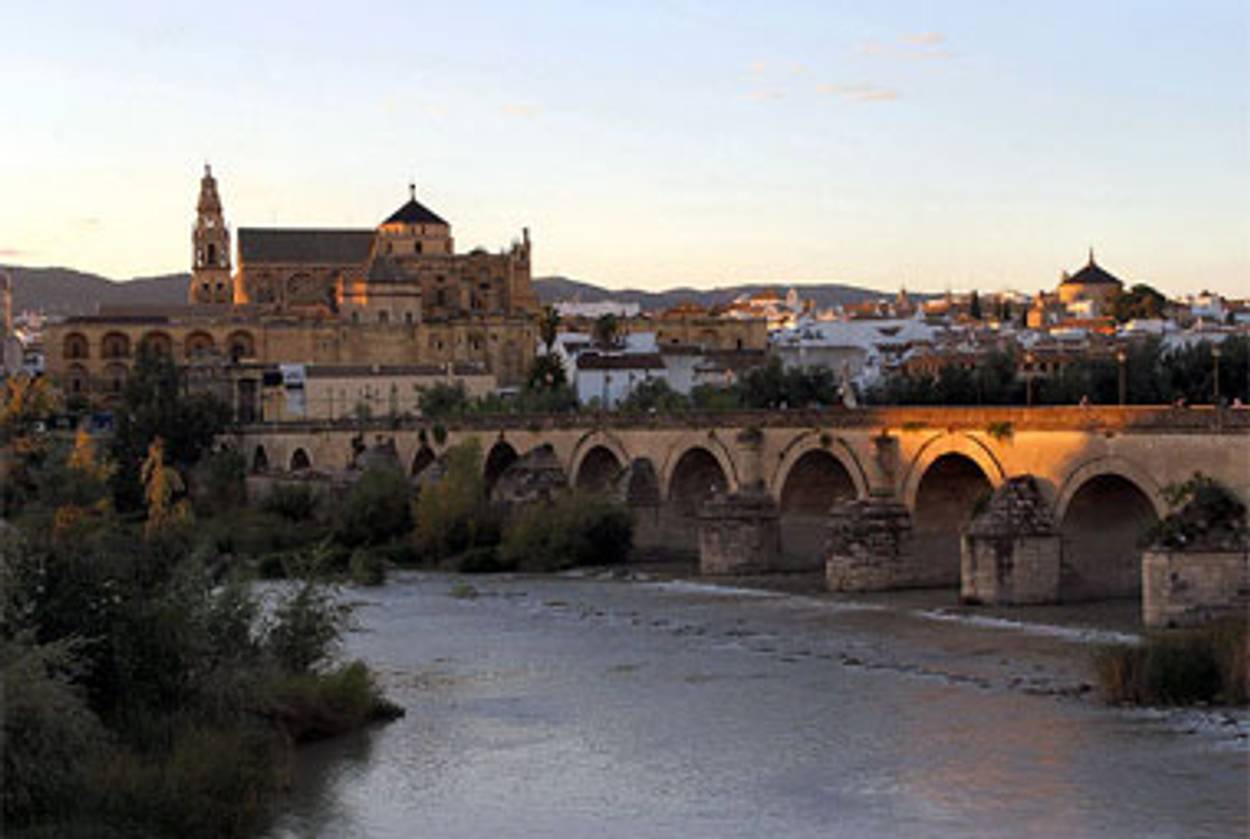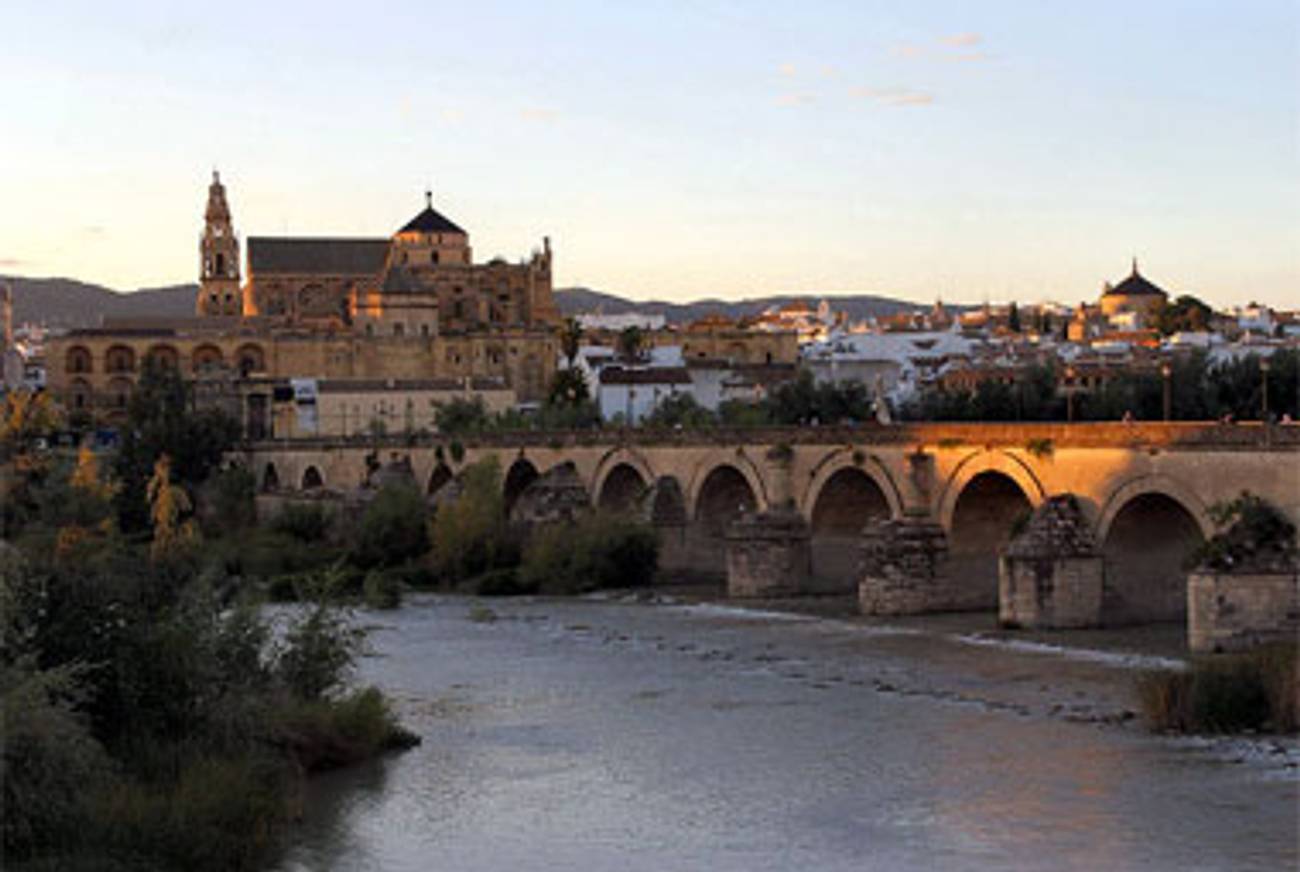Why Cordoba?
The Ground Zero Islamic center was named for a period in Spanish-Muslim history that some call a golden age of tolerance




Amid the debate over the Islamic center slated to be built two blocks from Ground Zero, few have stopped to consider the project’s name. Though it is now to be called Park51—a reference to its address, 45-51 Park Place—its initial name was Cordoba House, and the nonprofit behind it remains the Cordoba Initiative. It’s a reference to the city of Córdoba. But what does southern Spain have to do with southern Manhattan?
Córdoba was the capital of the Islamic caliphate that controlled the Iberian peninsula during the Middle Ages. Feisal Abdul Rauf, the imam who runs the Cordoba Initiative with his wife, named his project “after the period between roughly 800 and 1200 CE, when the Cordoba Caliphate ruled much of today’s Spain, and its name reminds us that Muslims created what was, in its era, the most enlightened, pluralistic, and tolerant society on earth,” he wrote in his 2004 book What’s Right With Islam. Rauf is seeking to align himself with those who see the period as the “Golden Age of Spain,” or what’s called the convivencia—“the coexistence”—when members of the three Abrahamic faiths lived side-by-side in peace, prosperity, and astonishing cultural and intellectual creativity.
For almost two centuries, though, as many Jewish scholars have described medieval Spain as atrocious for its Jews as have seen it as a sort of utopia. The latest to call the utopians’ bluff is essayist Hillel Halkin, in his 2010 Nextbook Press biography of the period’s greatest Jewish poet, Yehuda Halevi. “The higher Jews did rise,” Halkin writes of the time and place, “the more they aroused the anger and resentment of the Muslim or Christian majority, and the more vulnerable they became. The culture of tolerance stretched only so far.” Muslims, Christians, and Jews in medieval Spain “kept socially to themselves,” according to Halkin, “never intermarried, were convinced of the superiority of their own faith, and shared no common identity.” As for the intimations of some that the period was an ancestor of our contemporary multicultural West? “Such an analogy,” Halkin concludes, “is misleading.”
The debate over what Spain was like for its Jews 900 years ago has rarely been purely academic. Rather, over the past two centuries, Jewish historians have frequently seen in the period things they needed to see in order to make arguments about contemporary circumstances. If coexistence in Christian- and Muslim-ruled Spain was possible even in the 11th century, some have argued, then why do Jews today need a state in which they are the ones in charge—why, rather, shouldn’t the states in which they already reside welcome them as fully equal citizens? And if, on the other hand, even the convivencia—supposedly history’s most brightly shining beacon of multifaith tolerance—was a myth, then how could the Jews do without a state in which they are the ones in charge? The battle over medieval Spain is, to many, a battle over Zionism, and over what it means to be a Jew today.
***
According to Princeton historian Mark Cohen, the notion of convivencia, of medieval Spain as utopia, began with mid-19th century German-Jewish historians. Disappointed to find that emancipation did not equal equality, they crafted a long-ago world of true Jewish freedom as the model that their own world failed to live up to. “They looked back nostalgically to Muslim Spain, and said, ‘Look there,’ ” Cohen told me. “They wanted to embarrass the Christians.” They were not demanding a state of their own; on the contrary, they were demanding the right to live freely in another people’s state and, moreover, to be considered members of that people.
A subsequent batch of historians, under the spell of early-20th-century Zionism, cast medieval Spain not as a utopia but as, according to Cohen, “an unmitigated disaster.” They did so in order to argue that “Arab anti-Semitism is firmly rooted in a congenital, endemic Muslim/Arab Jew-hatred,” which in turn buttressed their case for a country of, by, and for the Jewish people.
So, which of those versions is right? Neither, Cohen said. In one essay, he refers to a “myth” (the German historians’ heaven) and a “counter-myth” (the Zionist historians’ hell) and asserts that the truth lies somewhere in between. Those who hold up the period as an ideal are exaggerating: “In a medieval situation,” he argues, “where you have monotheistic religions living in proximity, there is no such thing as toleration.” (In other words, tell “toleration” to the Jews of Granada, many of whom were massacred by angry Muslims in 1066, or to Granada’s Jewish vizier at the time, who was crucified.) And those who downplay the extent of tolerance and pluralism exaggerate, too. “If by convivencia,” said Cornell historian Ross Brann, “we mean that cultural and social proximity, conversation, and interaction among Jews, Muslims, and Christians were significant and productive,” then convivencia was real.
Despite the rise of this compromise position, some historians continue to push versions of the two more extreme visions of the period. The most prominent contemporary member of what might be termed the “utopian” school is Yale humanities professor María Rosa Menocal. And the historian to most recently advance the “counter-myth”—to posit that medieval Spain was largely hellish for its Jews—is Halkin.
***
Though Yehuda Halevi is wide-ranging (it spends a great deal of time, for example, on Halevi’s poetry, which Halkin translated), its central thesis is this: The defining moment of Halevi’s life was his decision to leave Spain for the Holy Land—a decision he made after realizing that a Jew could not freely and fully be a Jew in the Spain of his lifetime (roughly 1070 to 1140). “Halevi understood,” Halkin argues, “that Gentile oppression was the inevitable result of exilic existence.” It was an inevitable result nine centuries ago, and—to hear Halkin tell it—it remains an inevitable result today. And just as aliyah was the solution to the oppressiveness of exilic existence nine centuries ago, so it remains, according to Halkin, the solution today.
Yehuda Halevi is really a dual biography: a biography and an autobiography. “Like Yehuda Halevi,” writes Halkin, who moved from the United States to Israel in 1970, “I grew up with convivencia. It was just that the con didn’t go with the vivencia. Like wrong pieces of a puzzle, the two sides of me refused to fit together. The Jew and the American were barely on speaking terms.” The central moment in Halkin’s own life was when he chose to make aliyah, much as Halevi had done.
Halkin needs convivencia to have been a myth, and to be replaceable with a world in which the Granada pogrom was merely the most extreme example of a general trend, because Zionism—specifically, the strand of Zionism that states that Jews must rule themselves and have the ability to defend themselves—is a second-order value for him. For this reason, he attacks Menocal, the Yale professor and ultimate Golden Age-ist, in his book. In his interview with me, he asserted that medieval Spain has been “greatly idealized” and that Menocal and others, “in holding it up as some kind of human ideal of coexistence, are involved in a distortion of history.”
(Brann, of Cornell, disputes Halkin’s characterization. “Menocal only asserts that this period of cultural creativity featured abundant social and economic interaction,” he told me. And Cohen accused Halkin of projecting his polemical method onto Menocal; he insists that she is an academic historian seeking the objective truth rather than a debater trying to make a point. Menocal declined to comment for this article, instead referring me to Brann and Cohen.)
***
The professors I spoke to—who all offered various praises of Yehuda Halevi—supplied the same general critique: Halkin is a talented writer; he knows his stuff; but he is not an academic. More to the point, he does not possess the academic’s relentlessly single-minded focus on determining what actually happened. Rather, he allows his historical descriptions to be influenced by his ideological beliefs—”He’s very political,” said Raymond P. Scheindlin, of the Jewish Theological Seminary, “and has very strong opinions about the role of the Jewish people in the world.” (See Scheindlin and Halkin discussing Halevi earlier this year.)
Halkin can snipe as good as he is sniped at. “Academics are in the habit of deconstructing everyone but themselves,” he told me. Additionally, he is merely the latest in a two-century-old line of Jewish historians who have deployed preferred versions of medieval Spain in arguments about the present day. “I suppose you could say,” he admitted, “that the book was written all along with what I openly profess to having: A Zionist bias.” He added, “My Halevi is very much a Zionist, or a proto-Zionist. I approached the subject with that sense, and I came away with it only strengthened.”
Imam Rauf, the man behind the Cordoba Initiative, appears to be doing much the same thing as Halkin: using his view of what Spain used to be to advance his idea for what the world ought to be today. (Rauf is traveling and did not reply to requests for comment.) “We strive for a ‘New Cordoba,’ a time when Jews, Christians, Muslims, and all other faith traditions will live together in peace, enjoying a renewed vision of what the good society can look like,” he writes in the introduction to his 2004 book.
I asked Halkin what he thought of the Cordoba Initiative’s name. “It’s obvious what Cordoba stands for,” he replied. “Whether the real Cordoba was what Cordoba stands for is another question. But there’s nothing terribly wrong with it.”
So, maybe the solution is just to move beyond symbols? “We’re all basically defending our choices and lives and honors,” Halkin told me. “My Halevi is a defense of the choices I’ve made.”
“I’m willing to put Halevi aside and just say it,” he added.
Additional reporting by Mark Bergen.
Marc Tracy is a staff writer at The New Republic, and was previously a staff writer at Tablet. He tweets @marcatracy.
Marc Tracy is a staff writer at The New Republic, and was previously a staff writer at Tablet. He tweets @marcatracy.